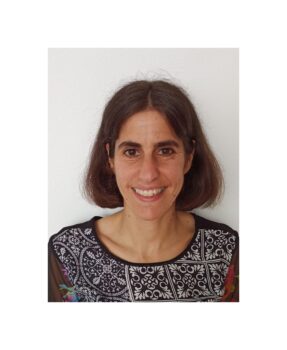December 2022
Amaia is a senior researcher in the Power electronics area in IKERLAN, a Technological Research Centre, member of Basque Research & Technology Alliance (BRTA), in Spain. She is also SEABAT project WP4 leader.
What was your original motivation to become a researcher?
The challenges and the possibilities to solve complex problems was my main motivation when I decided to become a researcher. Once time has passed, I have realized that to have the possibility to improve the capacity and the competitiveness of our clients is very grateful. Their satisfaction about the added value that we provide them is a motivation to always try to become better.
What is your (main) research area today?
My main research area is the design, development and validation of advanced control for power electronic converters for both drives and grid connected side, for different type of applications: railway, electromobility, energy (Photovoltaics and Wind Power converters) and industrial aplications.
What is the main objective of your team in SEABAT?
Five different teams of Ikerlan are taking part in the SEABAT project. The power electronics team is in charge of the design and validation of each DCDC converter that will go in the module. The Energy storage systems team oversees the design and validation of the Battery Management System (BMS) Master and Slave and is doing the different cells characterization tests. Furthermore, the Hardware systems team is developing the three Printed Circuit Boards (PCB) that will be provided by Ikerlan: the DCDC, the BMS slave and the Module Controller. This team will also take part in the EMC tests that will star next year. Real time systems team is developing the Software that will be embedded in the Module Controller with the BMS master functionalities and DCDC converter control. Finally, the mechanical design system team is helping in the material selection for the housing and cell fixation .
What expertise and facilities does your team have to meet those objectives?
Power electronics team is specialist in the multidisciplinary design (electrical, mechanical and thermal) and development of Low Voltage and Medium Voltage power electronic converters. We have a strong experience on Wide-bandgap semiconductors and high-efficiency and volume-optimized designs. Energy storage systems team develops electrical energy storage systems based on Li-Ion and NiMH batteries as well as ultra-capacitors, developing technologies from the single cell stage to power electronics and energy management in order to integrate storage solutions in the end application. Both team collaborate closely with industrial companies on the comprehensive development of new products.
IKERLAN has full-equipped power electronics and energy storage laboratories. In the smart mobility laboratory, there is a 1kVdc – 250kW reversible power supply to be used as battery pack charging and discharging tests as well as electric vehicles power-train tests. The electrical Energy Storage Systems Laboratory includes equipment for electrical and thermal characterization of batteries and ultracapacitors. Finally, Power Electronics and Medium Voltage lab allows us to perform electrical tests on power electronics converters (up to 4 kV DC and 150 kW) for validating drives and converters connected to the network.
Which aspects of your research at SEABAT do you believe are the most innovative and what unique opportunities offers SEABAT to yourself and/or your organization?
The distributed converter topology chosen in SEABAT project is based on a Modular-Multilevel Energy Storage System architecture. This fact allows us to design modular DCDC converter and BMS that can be easily used for different applications and projects.
Moreover, SEABAT project allows Ikerlan to extend the current expertise in electromobility applications to marine transportation. IIKERLAN is increasing its knowledge in designing and developing Energy Storage Solutions for marine applications, learning a lot about maritime regulation and battery safety issues. The aim of Ikerlan is to translate this knowledge to industrial maritime projects in the near future.
How do you see the future use of the SEABAT-results and the impact of SEABAT-project in our daily lives?
SEABAT project results will contribute to push battery type hybridization at maritime application. Energy storage system sizing will be optimized depending on the ship type, reducing the big capacity oversizing made at this moment with a single battery, which will reduce considerably the weight and the volume of the energy storage system.
Furthermore, SEABAT project has great potential to contribute to the innovation capacity in the emerging/developing market for large battery systems. The proposed concept is suitable for future battery generations and high-power components that may have higher power densities or will be based on different chemistries.
